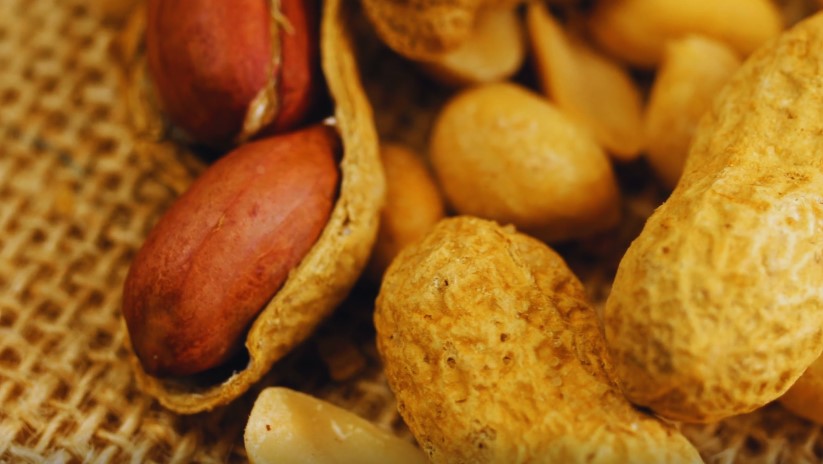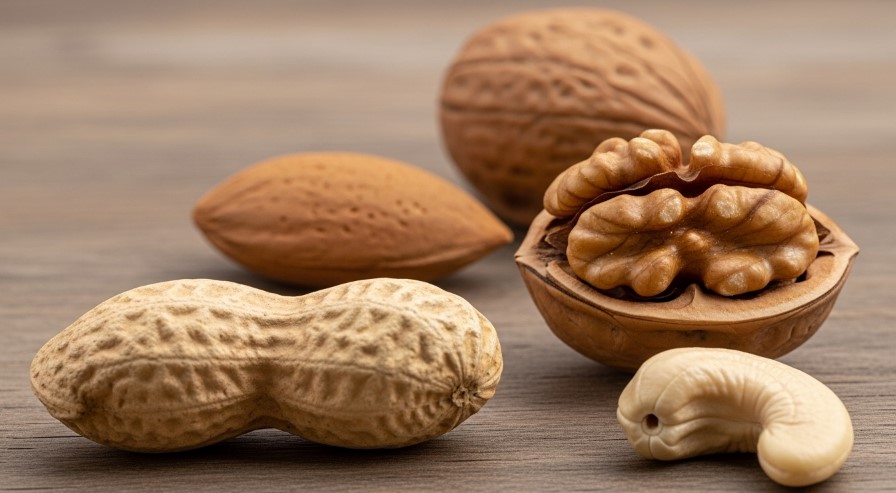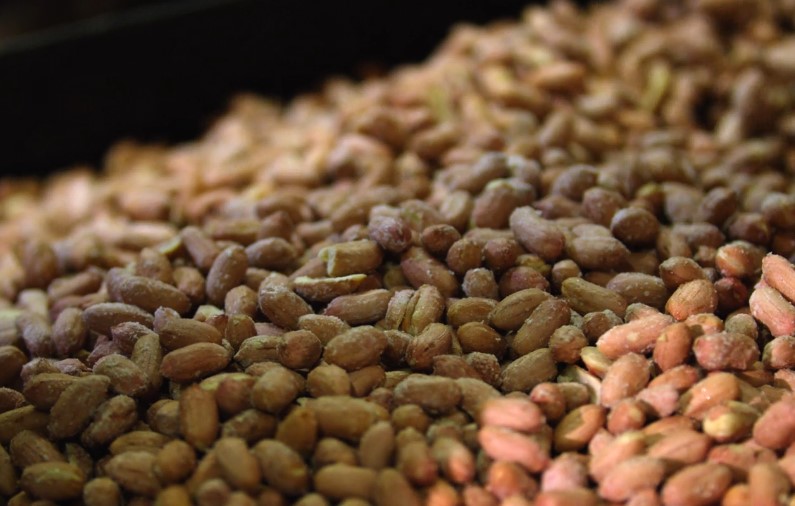A peanut is not a true nut. Botanically speaking, peanuts belong to the legume family (Fabaceae), making them closer relatives of beans, peas, and lentils than to tree nuts like almonds or walnuts.
The confusion comes from the way we eat and use peanuts, roasted, salted, spread into peanut butter, or added to desserts, which is very similar to how tree nuts are consumed. So while the word “nut” is in the name, peanuts grow underground in pods, and that places them squarely in the legume category.
What Makes a Nut a “True Nut”?
In everyday language, anything crunchy and shelled feels like a nut. But in botany, a “true nut” is very specific. A true nut is a hard-shelled fruit that doesn’t naturally split open at maturity. Instead, the seed remains trapped inside until cracked open.
Chestnuts, hazelnuts, and acorns are perfect examples. They develop from a single ovary, their shells stay sealed, and the edible seed inside waits for animals, or people, to break through.
Peanuts, on the other hand, grow in pods that split apart when ripe. That’s classic legume behavior, the same as peas or beans.
A Short History of the Peanut

The peanut’s journey is just as fascinating as its biology.
- Origin in South America: Peanuts were first cultivated more than 7,000 years ago in South America, likely in the regions of modern-day Bolivia and Peru. Archaeologists have found peanut-shaped pottery in ancient Peruvian sites, showing how important they were to local diets and culture.
- Spanish trade routes: When Spanish explorers reached South America in the 1500s, they carried peanuts to Europe. From there, peanuts spread along trade routes to Africa and Asia.
- Adoption in Africa: Africans embraced peanuts, calling them “groundnuts” and integrating them into stews, sauces, and snacks. The crop thrived in African soil, and enslaved Africans later introduced peanuts back to North America through food traditions.
- Peanuts in the U.S.In the 19th century, peanuts were considered a food for the poor or animal feed. But by the late 1800s, with the invention of peanut butter and the popularity of roasted peanuts sold at baseball games, the crop earned mainstream appeal.
Nutrition: Peanuts vs. Tree Nuts

Even though peanuts are legumes, their nutrient profile rivals or even surpasses tree nuts. That’s part of why the culinary world has grouped them.
| Nutrient (per 100g, roasted) | Peanuts | Almonds | Walnuts |
| Protein | ~25g | ~21g | ~15g |
| Fat | ~49g | ~50g | ~65g |
| Carbohydrates | ~16g | ~22g | ~14g |
| Fiber | ~8g | ~12g | ~7g |
| Calories | ~567 | ~579 | ~654 |
Peanuts are especially valuable for their high protein content, making them one of the most affordable sources of plant-based protein in the world. They are also rich in niacin, folate, vitamin E, magnesium, and antioxidants like resveratrol.
Cultural and Culinary Importance
Peanuts may not be true nuts, but their cultural impact is massive.
- United States: Peanut butter has become a household staple, appearing in sandwiches, baked goods, and candies. Americans consume about 700 million pounds of peanut butter annually.
- West Africa: Groundnut stew (often made with peanut paste, tomatoes, and spices) is a comforting and protein-rich meal found across the region.
- Southeast Asia: Peanuts appear in satay sauces, noodle dishes, and street food, adding creaminess and crunch.
- India: Roasted peanuts are sold in paper cones on busy streets, while peanut chutneys and peanut oil are common in regional cooking.
Peanut Allergies: A Serious Side
@hollyb_fitness Just cute allergy things !!!! #peanutallergy #allergicreaction #peanuts
Despite their benefits, peanuts are also one of the most common and dangerous food allergens. Peanut allergies affect millions of people and can cause severe, sometimes life-threatening reactions. Interestingly, being allergic to peanuts doesn’t always mean a person is allergic to tree nuts, since the proteins are different. But because cross-contact is common, doctors often advise avoiding both.
Beyond Food: Other Uses of Peanuts
Few crops are as versatile as peanuts. Apart from snacks and butter, peanuts are used in:
- Peanut oil: A cooking oil with a high smoke point, widely used in Asian cuisines.
- Livestock feed: Peanut shells and byproducts are turned into affordable feed.
- Industrial uses: Peanuts have been explored for making plastics, cosmetics, and even biofuels.
While not all his ideas stuck, they helped establish peanuts as a valuable cash crop in the U.S. South.
Why the Confusion Persists

At this point, you may be wondering why we still call peanuts “nuts.” The answer lies in language and culture. In the kitchen, we lump peanuts together with almonds, cashews, pistachios, and walnuts because they share similar flavors, textures, and uses. Supermarkets don’t make a separate “legume snacks” aisle. Instead, peanuts sit right alongside mixed nuts on the shelf.
In nutrition and allergy labeling, peanuts and tree nuts are also grouped for practical reasons: both can cause severe allergic reactions, and both are consumed in similar ways.
Final Thoughts
So, is a peanut really a nut? Scientifically, no, it’s a legume that grows underground, closer to beans than to almonds. But culturally, nutritionally, and culinarily, peanuts have earned their place among the nut family. They’re affordable, versatile, and globally significant.
Whether you’re spreading peanut butter on toast, sprinkling roasted peanuts on noodles, or enjoying a bag of salted peanuts at a ballgame, you’re eating a legume that masquerades as a nut, and doing so has shaped global diets and economies for centuries.
Hi there, my name is Kelly Barlow and kellytoeat.com is my blog. Here, I write about various recipes I want to reccommend to readers.
I try to find the best possible recipes that can attract the attention of readers, and at the same time, I strive to write it in the most engaging manner possible.
When I was younger, I wanted to become a chef. Sadly, it wasn’t meant to be, but at the very least, I write about it.
